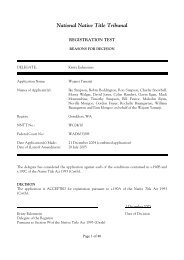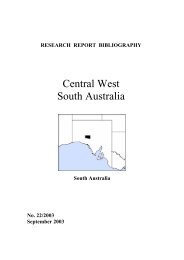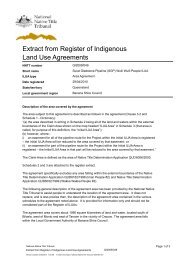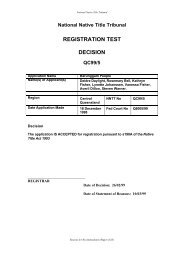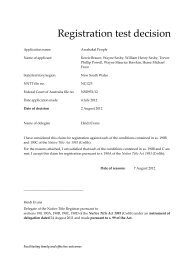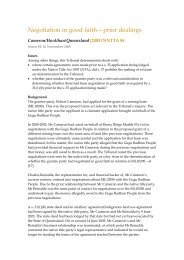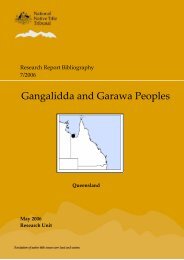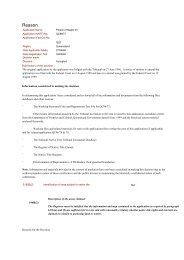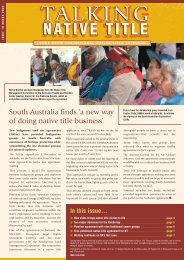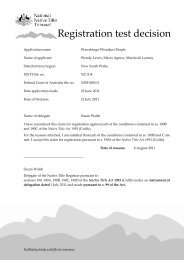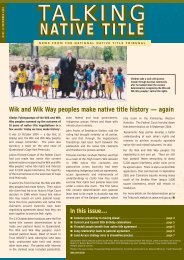Widjabul Aboriginal People - National Native Title Tribunal
Widjabul Aboriginal People - National Native Title Tribunal
Widjabul Aboriginal People - National Native Title Tribunal
- No tags were found...
You also want an ePaper? Increase the reach of your titles
YUMPU automatically turns print PDFs into web optimized ePapers that Google loves.
Bibliography<strong>Widjabul</strong> <strong>Aboriginal</strong> <strong>People</strong>The material used for these reports is derived largely from a search ofthe AIATSIS online catalogue. A large proportion of this material isavailable only from the AIATSIS library, which has limited resourcesavailable to supply material. Therefore care is taken to request onlythat material which appears relevant to the scope of a particularreport.The <strong>Tribunal</strong> Library also has substantial holdings of referencematerial which is used where appropriate. In addition, a number ofgeneral references were used, including:• Capell, 1963, Linguistic Survey of Australia;• Horton, 1996, <strong>Aboriginal</strong> Australia;• Tindale, 1940, 'Distribution of Australian <strong>Aboriginal</strong> tribes: a fieldsurvey'; and• Tindale, 1974, <strong>Aboriginal</strong> Tribes of Australia; andThis report contains summaries of information that is publiclyavailable and relevant to the location of the Arakwal, Minjungbal,Kalibal and <strong>Widjabul</strong> peoples relating only to the areas that form partof the native title claim. These four groups are reflected in theliterature as having an association with the region. Additionally, asearch was conducted of the language term 'Bundjalung' since thisterm is used in the literature to describe a larger language group towhich the above four 'dialects' may have belonged.The literature contains much salvage linguistic work from the 1960sonwards, as well as other material by researchers associated with theRichmond-Tweed Historical Society based in Lismore. This researchmaterial has a fair component of contact history, and a similaramount of material from living <strong>Aboriginal</strong> people with knowledge ofpast practices and aspects of cultural history. This information,gathered in the period from the 1960s, is valuable though oftenrepetitive. Information relating to the location of <strong>Aboriginal</strong> groupswithin the claim area has been reported only once. Subsequentaccounts of the same information have been omitted.- 3 -



